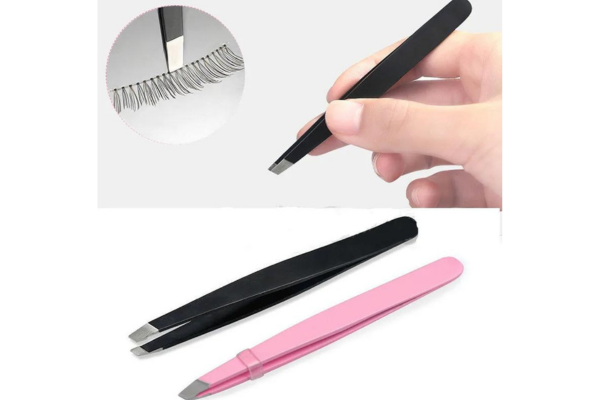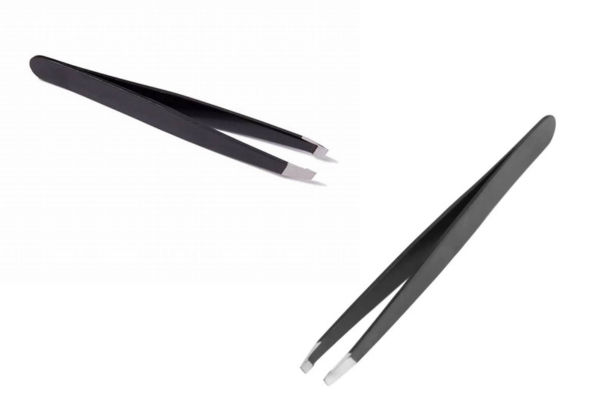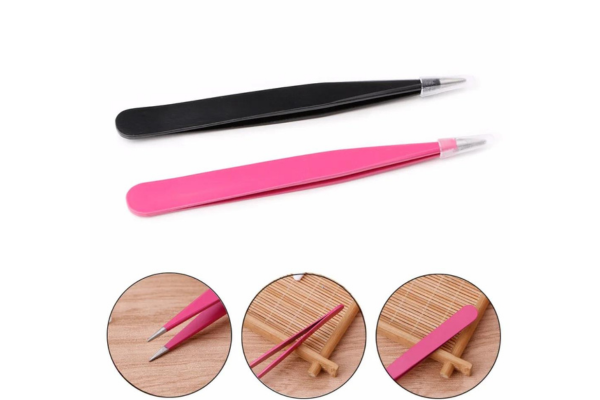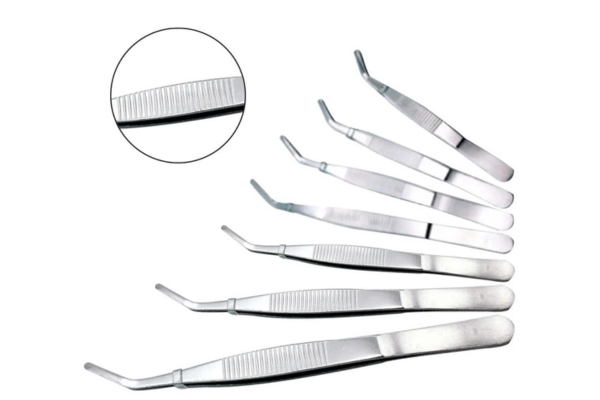Tweezers are one of those humble tools that constantly go overlooked but are necessary for a variety of tasks, from fixing to casting to medical procedures. Still, not all tweezers are created equal, and choosing the right bone for the job can make all the difference in its effectiveness and your satisfaction. In this comprehensive companion, Nghia Nippers will claw into the complications of the good tweezers, explore the different types available, and give expert tips on concluding the perfect brace for your conditions.

1. Understanding the Tweezer
Tweezers are small hand tools used for grasping objects too small to be fluently handled with the mortal fritters. Tweezers are thumb- driven forceps most probably deduced from tongs used to snare or hold hot objects since the dawn of recorded history. In a scientific or medical environment, they're typically pertained to as just" forceps", a name that's used together with other grasping surgical instruments that act like pliers, pincers and scissors- like clamps.
Tweezers make use of two third- class regulators connected at one fixed end (the fulcrum point of each switch), with the pincers at the others. When used, they're generally held with one hand in a pen grip between the thumb and indicator cutlet( occasionally also the middle cutlet), with the top end resting on the first rearward interosseous muscle at the webspace between the thumb and indicator cutlet.
Spring pressure holds the grasping ends piecemeal until cutlet pressure is applied. This provides an extended pinch and allows the stoner to fluently grasp, manipulate and snappily release small or delicate objects with readily variable pressure.
People generally use good tweezers for similar tasks as plucking hair from the face or eyebrows, frequently using the term eyebrow tweezers.
2. Matching tweezers to your needs
Tweezers may feel like a simple tool, but their versatility extends far beyond their introductory design. Matching the best tweezers to your specific requirements can make all the difference in the outgrowth of your task. From fixing to casting to medical procedures, there is a perfect brace of good tweezers for every job. There is how to ensure you are equipped with the right tool for the task at hand.
- Identify Your Task: Before opting tweezers, it's pivotal to easily define the task you will be bearing. Are you fixing your eyebrows, removing slivers, or working on intricate crafts? Each task requires a different set of features and capabilities from your tweezers.
- Consider Precision: If your task demands perfection, similar as applying false eyelashes or rooting fine hairs, conclude for tweezers with pointed or diagonal tips. These types of tweezers offer lesser control and delicacy, allowing you to grasp bitsy objects with ease.
- Estimating Grip Comfort: Comfort is crucial, especially if you will be using your tweezers for extended ages. Look for tweezers with ergonomic grips or padded handles that give a comfortable and secure hold. This is particularly important for tasks that bear steady hands and perfection movements.

- Assess Material and Continuity: The material composition of your tweezers can affect their continuity and performance. Stainless sword tweezers are a popular choice for their strength, erosion resistance, and ease of conservation. For technical tasks, similar to medical procedures, consider investing in high- quality, medical- grade tweezers for optimal performance and hygiene.
- Explore Specialized Features: Depending on your specific requirements, you may profit from tweezers with technical features. For illustration, some tweezers come with erected- in LED lights for enhanced visibility, while others feature slanted tips with textured grips for better running. estimate these features grounded on their applicability to your intended use.
- Seek Recommendations: If you are doubtful which tweezers are best suited to your requirements, do not vacillate to seek recommendations from professionals or trusted sources. Beauty experts, medical professionals, and casting suckers can offer precious perceptivity grounded on their guests and moxie.
3. Types of Tweezers
Good tweezers come in colorful shapes and sizes, each acclimatized to specific tasks and preferences. Understanding the different types of tweezers can help you choose the right tool for your requirements. There are four common types of tweezers.
>>> Read more: How to use a tweezer
3.1 Slant Tip Tweezers
Slant tip tweezers are among the most protean and extensively used types of good tweezers. Characterized by their angled tips, slant tip tweezers offer a balanced combination of perfection and versatility. The slanted edge provides a larger face area for gripping hairs, making them ideal for tasks similar as eyebrow grooming, hair junking, and general- purpose tweezing. The angled design allows for easy access to hard- to- reach hairs and ensures a secure grip for effective plucking.
3.2 Pointed Tip Tweezers
Refocused tip tweezers feature finely phased tips that come to a sharp point, allowing for precise and targeted grasping of small objects. These tweezers are invaluable for tasks that bear point delicacy, similar as removing slivers, applying false eyelashes, or handling intricate crafts. The sharp tips enable you to grasp indeed the smallest of hairs or objects with ease, making them an essential tool in any perfection- acquainted exertion.
3.3 Flat Tip Tweezers
Flat tip tweezers are characterized by their broad, flat tips, which offer a larger face area for absorbing objects with a wider profile. These good tweezers are particularly well- suited for tasks that involve handling larger accoutrements or objects, similar as casting, jewelry timber, and electronics assembly. The flat tips give stability and control, allowing you to manipulate accoutrements with ease and perfection. Also, flat tip tweezers are frequently used in medical settings for procedures that bear an establishment grip and controlled running.

3.4 Round Tip Tweezers
Round tip tweezers feature smooth, rounded tips that offer a gentler volition for sensitive skin or delicate tasks. Unlike pointed or diagonal tip tweezers, which can occasionally beget pinching or vexation, round tip tweezers give a softer grip that minimizes discomfort. These tweezers are generally used for tasks similar as applying skincare products, handling small insects, or performing perfection casting. The rounded edges ensure a gentle touch, making them suitable for use on sensitive areas of the body or delicate accoutrements .
4. The art of choosing
Opting for the perfect brace of good tweezers isn't just a matter of picking any tool off the shelf. It's an art, taking careful consideration of colorful factors to ensure optimal performance and satisfaction. There is a companion to learning the art of choosing tweezers.

- Define Your Purpose: Before diving into the vast array of tweezers available, take a moment to define your purpose. What tasks will you be using the tweezers for? Are you fixing your eyebrows, performing delicate crafts, or handling medical procedures? By clarifying your intended use, you can constrict down your options and concentrate on tweezers that are specifically designed for your requirements.
- Consider Tip Type: The type of tip on your tweezers plays a significant part in their functionality. Decide whether you need diagonal tip tweezers for general- purpose tasks, refocused tip tweezers for perfection work, flat tip tweezers for handling larger objects, or round tip tweezers for gentler use on sensitive areas. Matching the tip type to your intended task will ensure optimal performance and effectiveness.
- Estimate Material and Quality: Quality matters when it comes to tweezers. Look for tweezers made from durable accoutrements similar to pristine sword or titanium, which offer strength, erosion resistance, and life. High- quality tweezers are perfection- finagled for optimal performance, with well- aligned tips that give a secure grip. Investing in quality tweezers may bring further outspokenness but will eventually save you time and frustration in the long run.
5. Investing in Quality: Durability & Maintenance
When it comes to good tweezers, investing in quality is essential for icing long- term continuity and optimal performance. High-quality tweezers not only give superior functionality but also bear lower frequent relief, eventually saving you time and plutocracy in the long run. There is why quality matters and how to duly maintain your tweezers to maximize their lifetime.
- Continuity matters
Quality tweezers are generally drafted from durable accoutrements similar as pristine sword or titanium. These accoutrements offer exceptional strength and erosion resistance, icing that your tweezers remain in top condition indeed with frequent use. Cheaply made tweezers, on the other hand, may bend, break, or lose alignment over time, compromising their effectiveness and taking relief sooner than anticipated.

- Precision engineering
High - quality tweezers are perfection- finagled to exacting norms, with well- aligned tips that give a secure grip on indeed the smallest of hairs or objects. The tips of quality tweezers are finely honed to insure smooth and precise plucking without pinching or slipping. This position of perfection is essential for tasks that bear delicacy and control, similar as eyebrow grooming, chip junking, or casting.
- Proper conservation
To maximize the lifetime of your tweezers, proper conservation is crucial. After each use, wipe the tips of your tweezers with a clean cloth to remove any residue or debris. Avoid dropping or mishandling your tweezers, as this can beget misalignment or damage to the tips. Also, store your tweezers in a dry, clean terrain down from humidity and direct sun to help rusting or erosion.
- Regular drawing
Regular cleaning is essential for keeping your tweezers in optimal condition. Use a mild cleaner or soap and warm water to gently clean the tips of your tweezers, taking care to remove any buildup or residue. Avoid using harsh chemicals or abrasive cleansers, as these can damage the finish or integrity of your tweezers. After drawing, completely dry your tweezers with a soft cloth to help rusting or darkening.
- Professional sharpening
Over time, the tips of your tweezers may become dull or lose their perfection due to wear and tear and tear. However, consider seeking professional stropping or conservation services, If your tweezers no longer give the position of performance you ask . Professional stropping can restore the sharpness and alignment of your tweezers, dragging their lifetime and icing continued effectiveness.
Choosing the good tweezer is a matter of understanding your requirements, exploring the different types available, and investing in quality artificers. By following the ultimate companion as Nghia Nippers guided above, you will be equipped to attack any task with perfection, effectiveness, and confidence.
>>> Related News: Tweezer and nail clipper set













